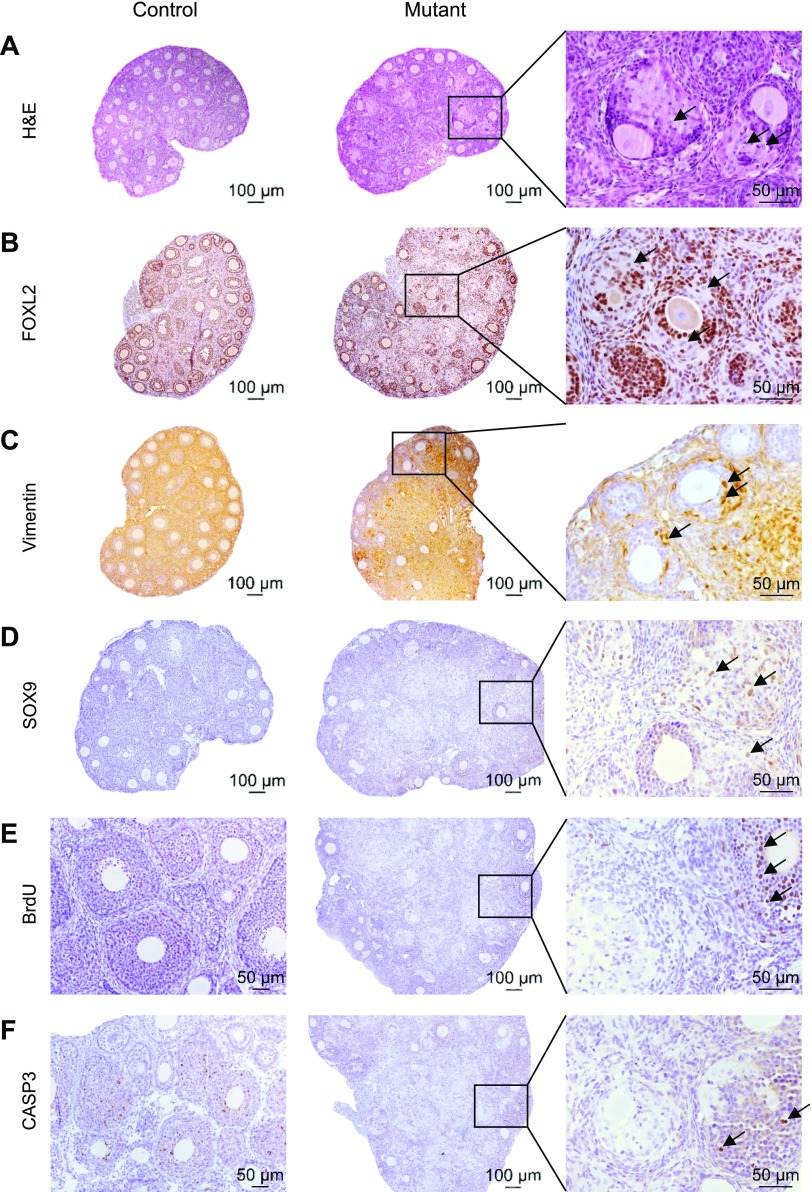Figure 2.
Loss of Lats1 and 2 causes loss of granulosa cell identity, possible EMT, and transdifferentiation into Sertoli-like cells. A) Representative images of Lats1flox/flox;Lats2flox/flox (control) and Lats1flox/flox;Lats2flox/flox; CYP19-cre (mutant) ovaries at 10 days postpartum (dpp). Inset: follicles containing a new cell type (arrows). B) FOXL2 IHC. Inset: the new cells are FOXL2-negative (arrows). C) Vimentin IHC. Inset: the new cells are vimentin-positive (arrows). D) SOX9 IHC. Inset: occasional new cells are SOX9-positive (arrows). E) BrdU incorporation assay on ovaries at 21 dpp; arrows indicate normal granulosa cells staining positive for BrdU. F) Cleaved CASP3 IHC at 21 dpp; arrows indicate normal granulosa cells staining positive for CASP3. H&E, hematoxylin and eosin.

